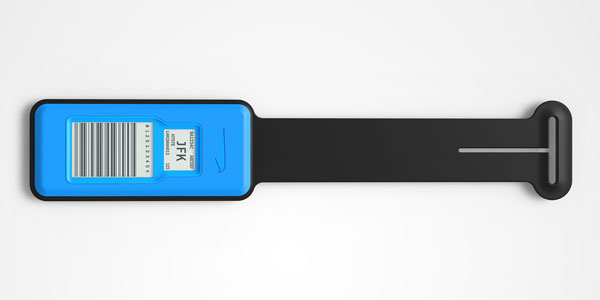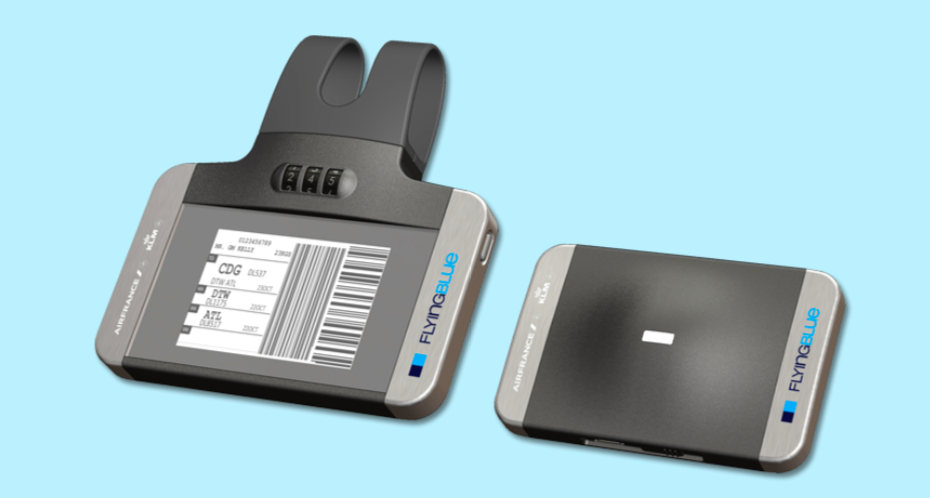Aviation
Airlines Digital Bag Tags..!! can track by smartphone.
By according to the article The Wall Street Journal For decades, fliers have checked their bags the same way: hand them to an airline employee and trust that they will reappear at the destination. Now big changes to that model are coming as airlines look to streamline the airport experience—and pass more work to customers and machines.
Their latest ideas including letting fliers tag their own bags, print luggage tags at home and track their bags on smartphones. Later this year, some fliers in Europe likely will begin using what could be the future of flying luggage: permanent bag tags that digitally update if flight plans change. Improved technology and loosened security rules are accelerating changes to baggage handling.
The changes face hurdles, including opposition from unions, security rules and fliers who prefer a human touch. On a recent weekday at Chicago’s O’Hare International Airport, several fliers struggled to tag their bag and summoned airline employees for help.Still, carriers are plowing ahead. More than a third of global airlines now ask fliers to tag their own bags, compared with 13% in 2009, according to SITA, an airline-technology firm. By 2018, more than three-quarters of carriers intend to offer the service. source (WSJ)



Customers travelling with British Airways through London Heathrow’s Terminal 5 have begun to test the personalised digital bag tag being developed by the airline. Employees from Microsoft have been chosen to take part in the month-long trial, using a specially adapted version of the British Airways app, to provide essential feedback that will help shape the final product.The digital bag tag, which contains all a customer’s baggage details, could eventually do away with the need for a new paper tag every time you fly. Comprehensive testing of the tag has already taken place to make sure it works in a live airport environment and can stand up to the rigours of airport baggage systems and everyday travel. (Source- airportinternational)
During the recent month-long test of the digital tags on British Airways flights between Seattle and London, “all bags went where they needed to go,” said Glenn Morgan, the airline’s head of service transformation. He declared that digital tag a success, but said the next step is expanding the type of smartphones that can program them. “Right now only Android and Windows phones support NFC,” said Morgan, and the airline wants to make sure the tags work fully with Apple phones as well.(source cnbc )
How it works ?
Air France, KLM and partners have worked for the past year on developing an innovative electronic bag tag and baggage tracker.It enables customers to label their luggage at home, drop bags at the fast bag drop and trace their luggage worldwide.
liked it ..! ?
Share with your friends and families

Aviation
COMAC Unveils Plans for the C929 to Rival Airbus and Boeing

After the success of China’s first C919 aircraft, the country is setting its sights on developing a larger plane. COMAC (Commercial Aircraft Corporation of China) has officially confirmed plans to build a widebody aircraft, marking a significant step in its aircraft lineup.
Traditionally, Airbus and Boeing dominate the widebody aircraft market, with decades of expertise in developing planes and engines capable of carrying heavy payloads. China, which currently relies on imported engines, is now aiming to challenge these giants with its own widebody jet, the C929, designed to compete with the Airbus A350 and Boeing 777.
American Airlines Is Looking for Flight Attendants: Apply Now
The C929 will be China’s first independently developed long-range widebody aircraft. It adheres to international airworthiness standards and boasts independent intellectual property rights. The baseline version is designed to seat 280 passengers and offers a range of 12,000 kilometers, catering to global demand for both regional and international air travel.
Russia, which also needs reliable narrowbody and widebody aircraft, could become a key customer for the C929. Additionally, China plans to target the broader Asian market as it continues to expand its aviation capabilities.
Close Call at Heathrow: BA Flight Narrowly Escapes Drone Collision
China’s aviation progress includes the ARJ21 (now called C909), a regional jet with 100 seats for shorter routes, and the C919, a narrowbody jet with 180 seats designed to rival the Boeing 737 MAX and Airbus A320. Both models have found increasing demand in the domestic market.
At China’s largest air show in Zhuhai, COMAC announced that Air China will be the launch customer for the C929 widebody jet, though details about order size and delivery timelines were not disclosed.
Other major deals announced by COMAC include:
- Hainan Airlines: Firm orders for 60 C919 and 40 C909 regional jets.
- Colorful Guizhou Airlines: 30 C909 jets, with 20 firm orders and 10 provisional agreements.
The C929, renamed from the CR929 after Russia withdrew from the joint development project in 2023, is expected to carry 280–400 passengers with a range of 12,000 kilometers, competing directly with Boeing’s 787 Dreamliner.
According to COMAC’s deputy general manager, Tong Yu, the first fuselage section of the C929 is expected by September 2027, with prototype test flights anticipated soon after.
-

 Aviation2 months ago
Aviation2 months agoMicrosoft Flight Simulator Raises $3 Million to Bring Back the An-225 Mriya
-

 Airlines2 months ago
Airlines2 months agoQantas Engineers Stage Walkout Over Cost of Living Concerns
-

 Airlines2 months ago
Airlines2 months agoQatar Citizens Can Travel to the United States Without a Visa
-

 Aviation2 months ago
Aviation2 months agoQatar Airways bans these new Electronic Devices on plane
-

 Airlines2 months ago
Airlines2 months agoJapan Airlines Rolls Out Free Domestic Flights to International Passengers
-

 Defence2 months ago
Defence2 months agoWhich Country Has the Largest Fleet of Fighter Aircraft?
-

 Airport2 months ago
Airport2 months agoWestern Sydney Airport Welcomes Its First Plane After 6 Years of construction
-

 Aviation2 months ago
Aviation2 months agoDid you know ? Once Boeing 747 carried 1088 passenger in 1991








